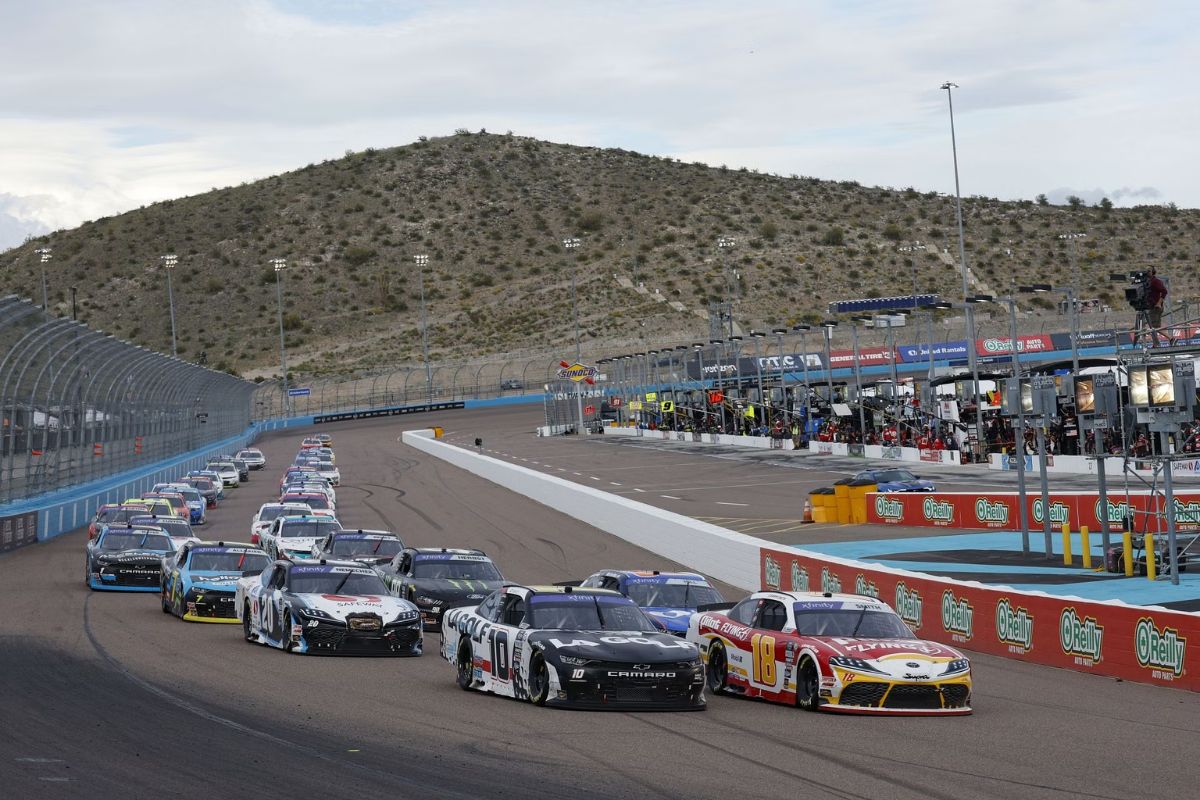NASCAR Satisfied With Short-Track Upgrade: NASCAR’s recent short-track upgrades have sparked a notable shift in the racing dynamics, with Phoenix Raceway serving as the proving ground for the sport’s advancements.
Christopher Bell’s dominant performance at the track unveiled a new era in NASCAR competition, leaving all the fans and analysts intrigued by the potential implications of these developments.
As NASCAR continues to fine-tune its approach to track enhancements, the question arises: could these incremental improvements pave the way for a more competitive and captivating racing experience across the board?
Incremental Improvements to NASCAR’s Short Track Package at Phoenix
NASCAR’s short track package at Phoenix Raceway has seen incremental improvements, as evidenced by the positive strides observed in the performance of the Next Gen car. Cup Series managing director Brad Moran highlighted the encouraging data, pointing out approximately 2,800 green flag passes during the recent race, a substantial increase compared to previous events. This surge in on-track action indicates a step in the right direction for the sport, showcasing the effectiveness of the adjustments made to enhance the racing experience.
Moran’s emphasis on the need for continuous refinement rather than drastic alterations shows NASCAR’s commitment to ensuring competitive and exciting races while maintaining the integrity of the sport. The 19 lead changes in the Shriners Children’s 500, coupled with Christopher Bell’s dominant victory, serve as tangible proof of the positive impact of these strategic modifications. By carefully balancing innovation with tradition, NASCAR appears to be navigating the path towards an even more engaging and competitive racing environment at Phoenix Raceway.
Christopher Bell’s Commanding Victory at Phoenix
Christopher Bell’s triumphant performance at Phoenix Raceway exemplified strategic prowess and resilience in the face of challenges, showcasing a masterclass in competitive racing. The Joe Gibbs Racing driver’s victory demonstrated the following key elements:
- Strategic Brilliance: Bell’s ability to navigate through the challenges, like a slow pit stop, with calculated precision highlighted his strategic acumen on the track.
- Resilience Under Pressure: Despite facing setbacks, Bell maintained his composure and pushed through, displaying resilience and determination that are essential qualities for success in high-stakes racing.
- Dominance and Adaptability: Bell’s commanding win showed his ability to adapt to the changing race conditions and assert his dominance, solidifying his position as a formidable competitor in NASCAR.
Bell’s triumph not only showcased his individual skills but also highlighted the impact of the incremental improvements to the short track package, contributing to an exhilarating and unpredictable race for fans.

Caution and Consideration: NASCAR’s Approach to Further Enhancements
In navigating the path towards enhancing the short-track racing experience, NASCAR’s strategic approach embodies a meticulous balance between innovation and prudent deliberation. Despite positive feedback on recent improvements, NASCAR exercises caution in implementing rapid changes. Cup Series managing director Brad Moran stresses the importance of evaluating driver feedback carefully.
The recent introduction of a new tire compound and adjustments to the rear diffuser showcases NASCAR’s commitment to incremental progress. Discussions surrounding the addition of horsepower are ongoing, with Moran recognizing the complexities involved, such as considering input from all three manufacturers and potential challenges in development and reliability. The upcoming races at Circuit of The Americas and Richmond Raceway will serve as crucial testing grounds for the continued evolution of NASCAR’s Next Gen car.
| Point | Emphasis | Importance |
| Incremental Progress | Evaluation | Steady Improvement |
| Consideration of Feedback | Caution | Driver Involvement |
| Complexity of Decisions | Manufacturer Involvement | Development Challenges |
| Testing Grounds | Insights | Evolution of Next Gen Car |
News in Brief
Phoenix Raceway’s recent short-track upgrades showcase NASCAR’s commitment to enhancing racing dynamics. Cup Series director Brad Moran highlights positive strides, noting around 2,800 green flag passes in the Shriners Children’s 500, emphasizing incremental improvements. Christopher Bell’s dominant victory underscores strategic brilliance, resilience, and adaptability. NASCAR’s cautious approach, balancing innovation with driver feedback, is evident in recent tire compound changes and rear diffuser adjustments. Ongoing discussions about horsepower additions reflect consideration for manufacturer involvement. The upcoming races at Circuit of The Americas and Richmond Raceway serve as crucial testing grounds for the evolving Next Gen car, promising a competitive and captivating racing experience.
Our Reader’s Queries
Q. What are the short tracks in NASCAR?
A. Short tracks, defined as those under 1 mile in length, include venues like Martinsville Speedway (.526 miles), Bristol Motor Speedway (.533 miles), and Richmond Raceway (.75 miles) in the Cup Series.
Q. Why did NASCAR change cars?
A. The Next Gen car represents a significant evolution from the Generation 6 model, incorporating enhanced aero and downforce packages along with innovative track technologies. Beyond performance improvements, the Next Gen car aims to reduce costs and entice new original equipment manufacturers (OEMs) to join the competition alongside established brands like Chevrolet, Ford, and Toyota.
Q. How many Nascar tracks are there?
A. NASCAR competes on a diverse array of 42 tracks across the United States and Canada. These tracks vary from oval short tracks to expansive 2-mile-long superspeedways and intricate road courses. Among them, Talladega Superspeedway in Talladega, Alabama, stands as the largest NASCAR oval, spanning an impressive 2.66 miles. This diversity in track types adds a unique dimension to the NASCAR racing experience, testing drivers’ skills across different configurations and challenging landscapes. Whether navigating tight turns, reaching high speeds on superspeedways, or tackling road course intricacies, NASCAR drivers showcase their versatility and prowess on the varied tracks that make up the NASCAR circuit.
ALSO READ: Nascar’s Short-Track Struggle: Insights From Racing Legends



